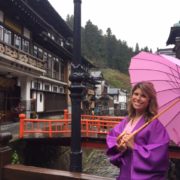The Hotel Snob reviews Club Med Punta Cana
Outstanding beach? Check.
Sleek, sexy rooms? Check (Zen Oasis!).
Healthy food options & variety? Check.
A Variety of Activities? Check.
I was surprised by how much Club Med Punta Cana had going on! I traveled to the Dominican Republic for one week of experiencing Club Med for the first time. I am do-er when I travel, and at the resort, it feels like there are endless activities! I tried to do as much as I could–waking up for sunset yoga, perfecting my mini-golf game, learning archery for the first time where I finally used a compound bow and even taking a sailing lesson! The days felt so long because I was able to do so much, all on the Club Med “campus” as the G.O.s called it. Here’s my Hotel Snob rundown
Rooms
I stayed at their new “resort within a resort,” the Zen Oasis.The oversized lagoon pool was the centerpiece of this semi-private space, with in-water loungers, a hot tub could fit a party of 50, and the Hibiscus Bar which offered refreshments & tropical drinkst throughout the day. And you won’t hear any kids splashing around at this pool! The Zen Oasis is exclusive to adults so we could really relax and enjoy the Caribbean sunshine.

The rooms were sleek and minimalist, with amazing showers and very comfy beads. They each had their own outdoor space with day beds and if you had an upper room, you had lovely pool views.

Dining
There were several dining areas and options for each meal. I think my favorite was lunch out at Indigo Restaurant and Lounge. This open air space is located quite literally on the ocean, with waves splashing as you dine on the made to order menu.
The buffet dinner was very impressive at Samana Restaurant. They had a variety of ethnic cuisines, with chefs individually preparing plates at each station. The homemade ice cream definitely won me over.
Service
“Gentil Organisateurs,” or GOs, are a Club Med signature. The GOs are basically the staff but they treat their jobs as more like friends of the guests. They lead activities, provide any help that you need and of course are cheery and friendly. I got to know Christelle, an experience GO at Tiara, the 5 Trident Luxury space at the resort (read: oceanview villas with a private bar and pool) and she was a wonderful host.


Activities
I loved all the activities, as I mentioned, and the options were for all types of travelers. Need an intense cardio class to work off those margaritas? They have it. Want to learn out to kitesurf? No problem. In need of a massage in a beach cabana? Of course. There’s really just about every activity you could want on a beach vacation. However, I was truly surprised, challenged and impressed by their CREACTIVE by Cirque du Soleil program. Ever wanted to learn how to do aerial silks, swing from trapeze or spin in a giant bungee? You can! Watch to see this incredible program:
Overall, I didn’t know if I’d like an all-inclusive resort that has a very heavy family focus. Well, I found that is not all that Club Med Punta Cana is! I was able to find experiences that fit my preferences–being active, healthy eating, beautiful landscape, new activities and luxurious rooms. Next time, I want to bring a group of friends to take advantage of this one-of-a-kind resort experience!


























 Connect with Kelley
Connect with Kelley


